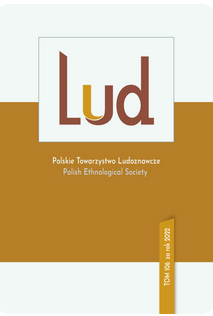REPRESENTATIVENESS AND CULTURAL VARIATION OF ETHNIC GROUPS FROM THE FORMER POLISH-LITHUANIAN COMMONWEALTH IN G.P. MURDOCK’S ETHNOGRAPHIC ATLAS
REPRESENTATIVENESS AND CULTURAL VARIATION OF ETHNIC GROUPS FROM THE FORMER POLISH-LITHUANIAN COMMONWEALTH IN G.P. MURDOCK’S ETHNOGRAPHIC ATLAS
Author(s): Rafał MiśtaSubject(s): Cultural Anthropology / Ethnology, Methodology and research technology, Sociology of Culture, Ethnic Minorities Studies
Published by: Polskie Towarzystwo Ludoznawcze
Keywords: Ethnographic Atlas; the Polish-Lithuanian Commonwealth; Methodology; cross-cultural studies;
Summary/Abstract: George P. Murdock’s Ethnographic Atlas is one of the largest and most popular ethnographic databases in the world. It takes the form of a table containing systematically coded cultural characteristics for nearly 1,300 societies from around the world, and its structured form is particularly suited to cross-cultural quantitative research. One issue often raised in the context of using the Ethnographic Atlas is the underrepresentation of European ethnic groups. The aim of this paper is to examine how the database represents the territory of the Polish-Lithuanian Commonwealth: what are its deficiencies and what are the potential opportunities for its improvement in terms of representativeness and cultural diversity. For this purpose, a descriptive-statistical analysis of representativeness, cultural variation, and cultural similarities and differences between ethnic groups from the territory of the Commonwealth was conducted. The purpose of this paper is to help ethnographers decide what data in the Ethnographic Atlas can be added to or improved in a way that is effective in terms of the character and application of the dataset.
Journal: LUD
- Issue Year: 106/2022
- Issue No: 1
- Page Range: 173-207
- Page Count: 35
- Language: English

